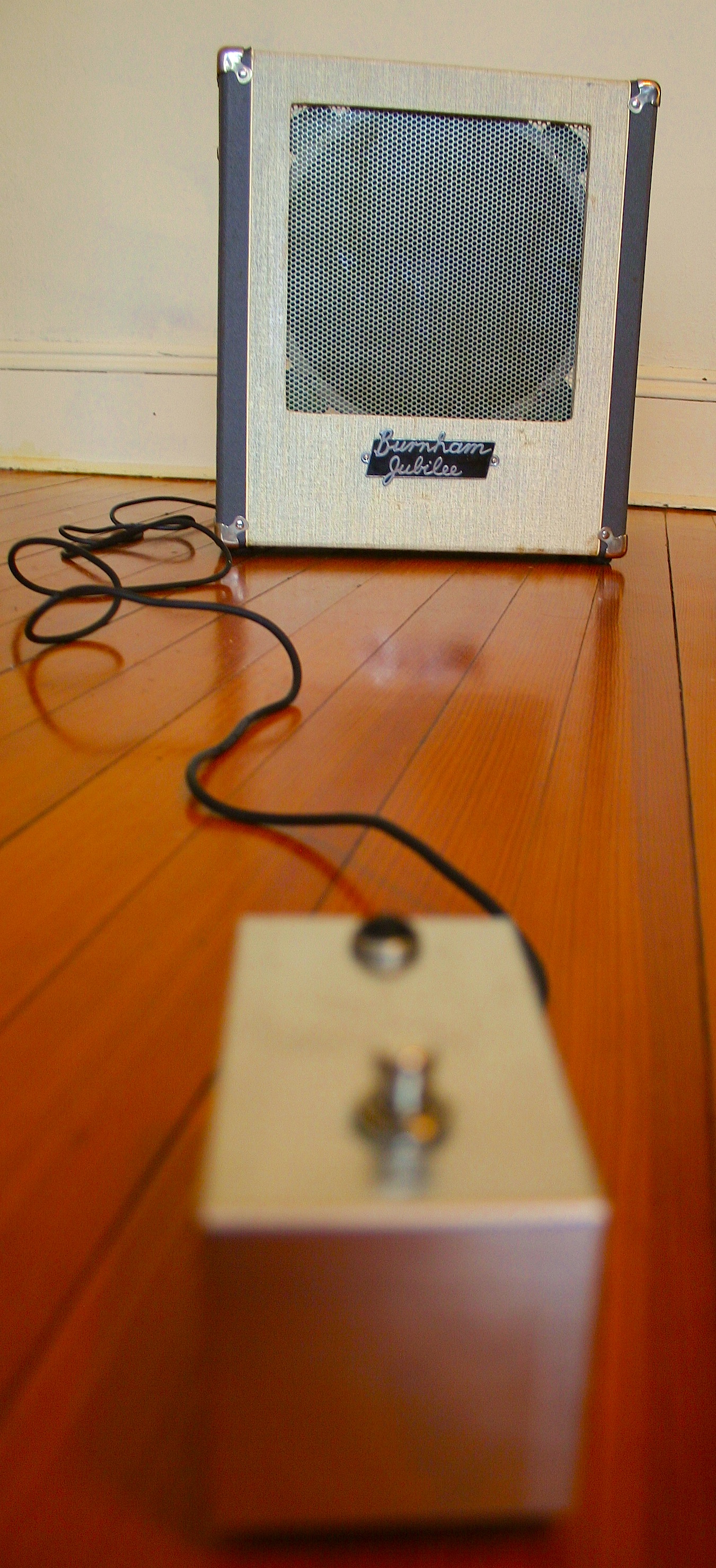 As I mentioned on my Tumblr last year, I used the idle time during our annual Open Studios event to construct yet another Fender Champ-based guitar amplifier. I had purchased a pair of unused circa 1955 suitcase-PA speakers cabinets, along with a Shure Commando mic, as a set on eBay for a few bucks with the intent of turning them into lil combo amps.
As I mentioned on my Tumblr last year, I used the idle time during our annual Open Studios event to construct yet another Fender Champ-based guitar amplifier. I had purchased a pair of unused circa 1955 suitcase-PA speakers cabinets, along with a Shure Commando mic, as a set on eBay for a few bucks with the intent of turning them into lil combo amps.
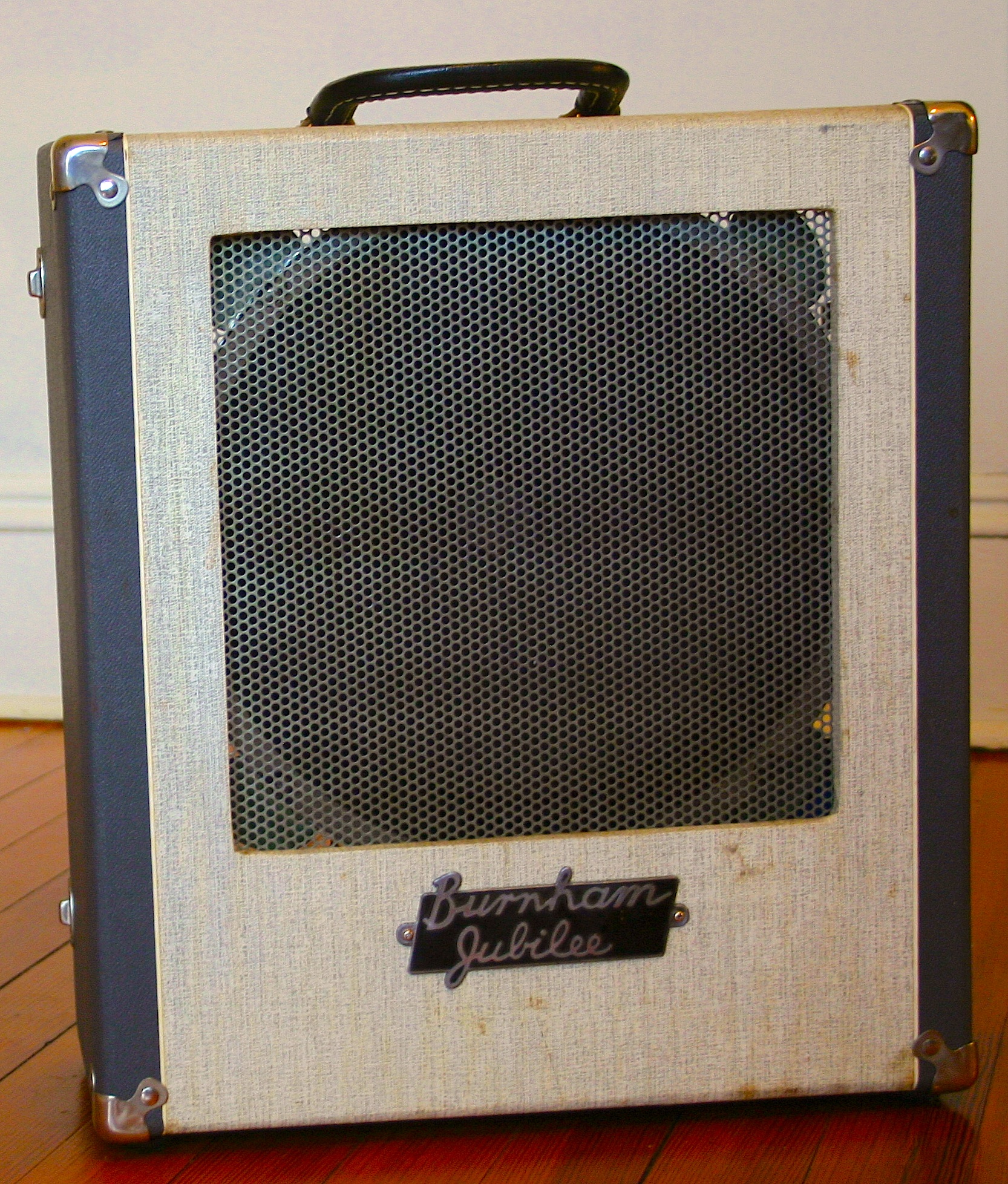 Aside from some odd shopwear/discoloration, the cabs were very solid and the original 12″ drivers sounded good. Based on the interior space available (and the relatively low power handling of the driver) I decided to build a variation on the classic Fender Vibrochamp.
Aside from some odd shopwear/discoloration, the cabs were very solid and the original 12″ drivers sounded good. Based on the interior space available (and the relatively low power handling of the driver) I decided to build a variation on the classic Fender Vibrochamp.
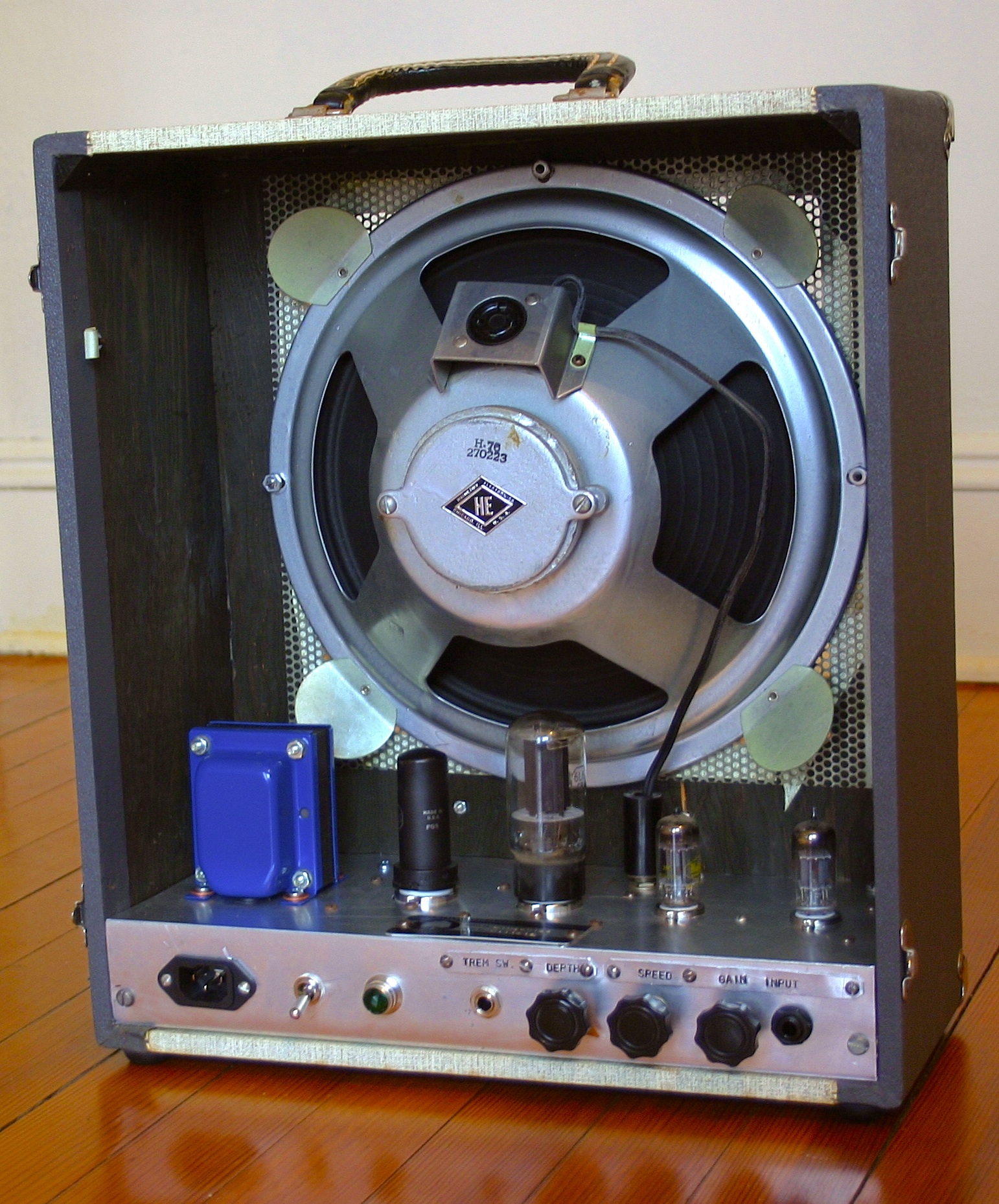 And so was born the King-Vibe. Similar in principle to a vibro-champ, the King Vibe has more power output (approx. 6 watts, courtesy of its 6L6 rather than 6V6 output section) and waaaaaaaaaaay more gain. The additional 20db of gain was achieved by eliminating the tone stack. The aluminum chassis was formed by hand; all wiring is point to point with Sprague and Solen coupling caps. I used a 6X5 rectifier tube, as the Edcor power transformer has only a 6.3V haeater winding. Output transformer is also an Edcor. The speaker is attached via a 1/4″plug at the top of the chassis so that an external cab can be easily connected. IEC mains socket is provided for convenience and a tidy appearance.
And so was born the King-Vibe. Similar in principle to a vibro-champ, the King Vibe has more power output (approx. 6 watts, courtesy of its 6L6 rather than 6V6 output section) and waaaaaaaaaaay more gain. The additional 20db of gain was achieved by eliminating the tone stack. The aluminum chassis was formed by hand; all wiring is point to point with Sprague and Solen coupling caps. I used a 6X5 rectifier tube, as the Edcor power transformer has only a 6.3V haeater winding. Output transformer is also an Edcor. The speaker is attached via a 1/4″plug at the top of the chassis so that an external cab can be easily connected. IEC mains socket is provided for convenience and a tidy appearance.
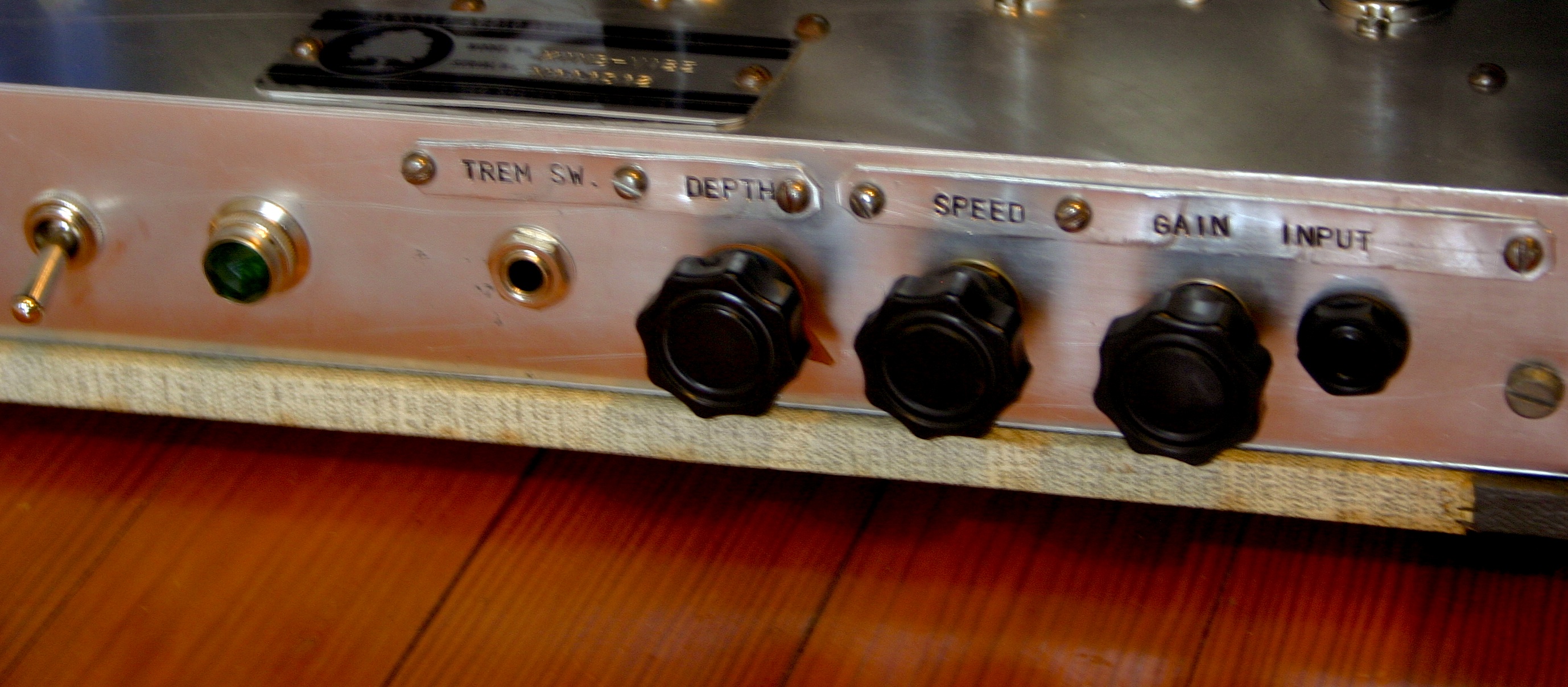 The tremolo is still fully variable and there is a lone Gain control, no bass+treble knobs. Whatever minor inconvenience this presents is more than justified by the insane amounts of distortion and fuzz that this thing is capable of. And like the early Tweed Champs (which have the same topology), it cleans up perfectly by simply backing off of the gtrs volume control. The 6L6 sees a little over 250V on its plate, which is the low end of the ‘textbook’ operating curve of that tube. This allows the amp to break up into smooth power-stage distortion relatively quickly, which is kinda the point of these small amps anyhow.
The tremolo is still fully variable and there is a lone Gain control, no bass+treble knobs. Whatever minor inconvenience this presents is more than justified by the insane amounts of distortion and fuzz that this thing is capable of. And like the early Tweed Champs (which have the same topology), it cleans up perfectly by simply backing off of the gtrs volume control. The 6L6 sees a little over 250V on its plate, which is the low end of the ‘textbook’ operating curve of that tube. This allows the amp to break up into smooth power-stage distortion relatively quickly, which is kinda the point of these small amps anyhow.
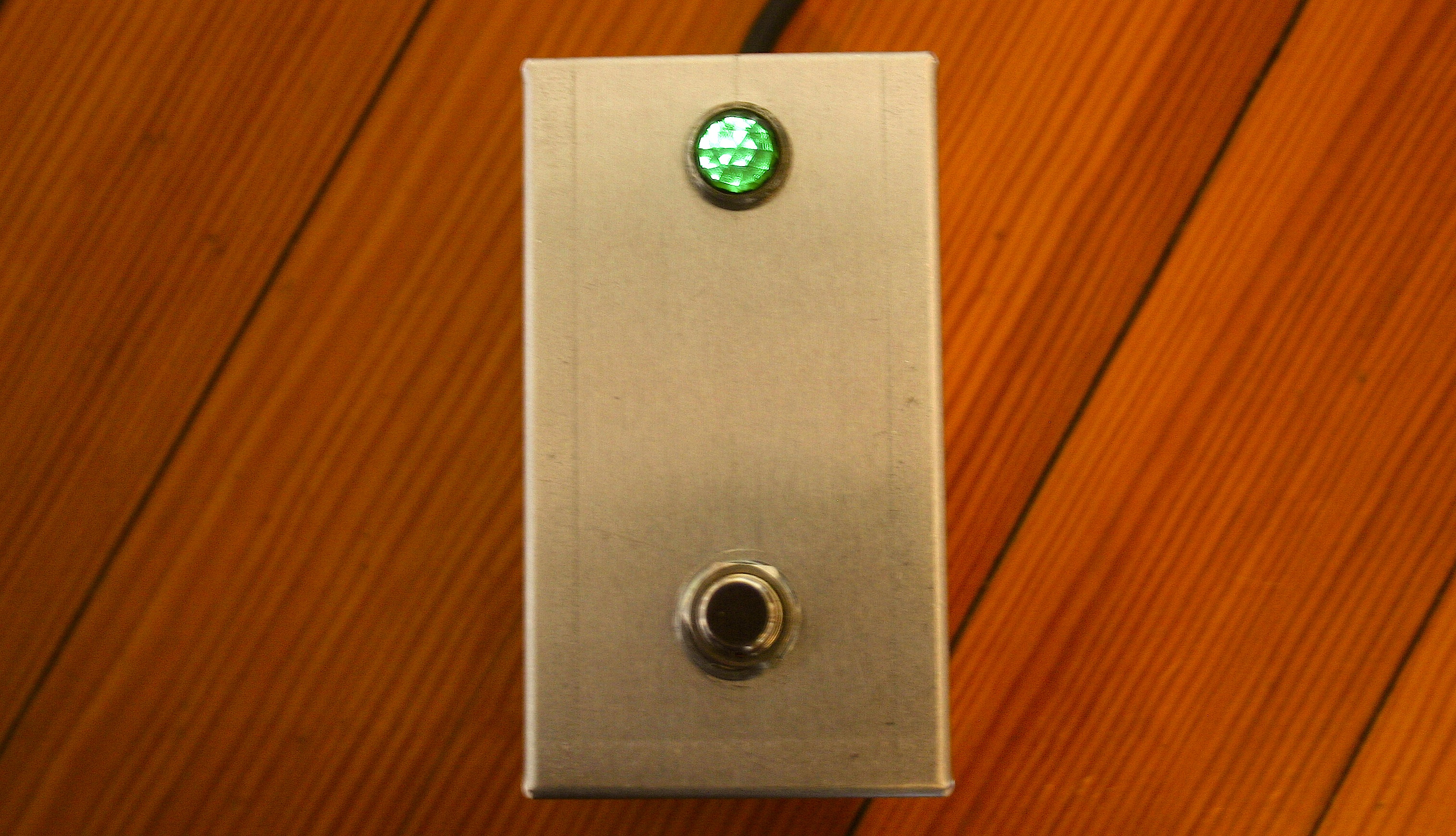 A detachable footswitch with a handy status-indicator jewel lamp completes this package.
A detachable footswitch with a handy status-indicator jewel lamp completes this package.
4 replies on “King-Vibe Amplifier”
You do know the 6X5 has a long and thorough reputation, right?
I know that it appears in a lot of pro audio devices of the 40s and 50s, and I use them in most of my pro audio builds.
Mostly the 6X5 was used in car radios, although some home radios especially by Philco used them. They were interchangeable with the 0Z4 gas rectifier in many but not all car sets.
A Google search reveals that they are considered highly troublesome.
.philcoradio.com/phorum/showthread.php?tid=1080
I don’t understand why you insist on running tube rectifiers in Class A single ended amplifiers, because the particular voltage dropping characteristics of rectifier vacuum tubes (or gas tubes) have no effect on the sound. A resistor would do the exact same thing.
The 6X4 was generally much more reliable if you must have a 6.3V heater cathode rectifier tube, but as the poster says, the only sane reasons to use tube rectifiers are for the specific voltage drop curve in a Class AB guitar amp or if you are building out for a nuclear war or other major EMP event. In small signal devices or Class A amplifiers of any type it’s of no benefit. In a Class B amplifier it’s ironically of no use either since to get them to work at all you have to have enough reserves that there is very little drop, which is why all those old Altec and Stromberg transmitting tube amps have two or three rectifier tubes or gas tubes.
Zenith used a 3 volt heater rectifier tube in its bigger color sets in the early 60s, which I have never heard of any guitar amps using. It was the highest current rectifier tube (aside from Tungar bulbs) in the receiving tube armamentarium and is in later RCA manuals. I’m sure any winder would make you a transformer with the right winding today.